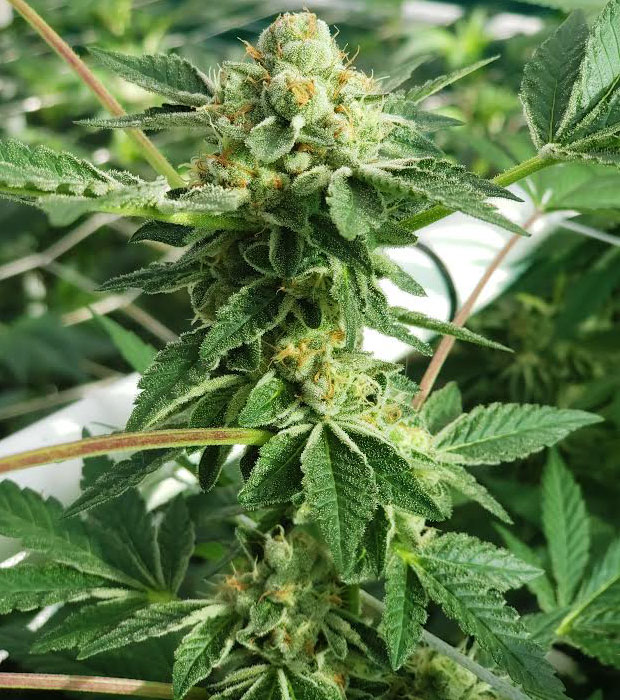CBD Vs. THC: Which One is a Better Treatment Option?
Many countries have been using cannabis medicinally for centuries, knowledge of its healing benefits is nothing new; however, its acceptance here in the United States is just starting to gain momentum. The therapeutic values of cannabis are only now beginning to be explored, slowed because it is heavily regulated by the federal government as a Schedule 1 Controlled Substance; nevertheless, the level of effectiveness that this plant offers when it comes to the treatment of life-threatening medical conditions can no longer be overlooked.
Recognized as one of the latest breakthroughs in healthcare, studies have found that cannabis can help treat several serious illnesses, with little to no side effects, and can even prevent the spread of cancer.
You may be wondering, how does it do that? What makes it medicinal?
The answer is cannabinoids.
 Cannabis has proven to be a highly effective treatment for a variety of serious illnesses
Cannabinoids are chemical compounds naturally found in the cannabis plant. Once consumed, they bind to receptors in our endocannabinoid system to help regulate any problems and keep our bodies working properly. While the plant contains over one-hundred different cannabinoids, the two most common are tetrahydrocannabinol (THC) and cannabidiol (CBD). Many people have heard of THC, but it wasn’t until recently that CBD was brought into the spotlight, thanks to all of the medicinal benefits it brings to the table.
Cannabis has proven to be a highly effective treatment for a variety of serious illnesses
Cannabinoids are chemical compounds naturally found in the cannabis plant. Once consumed, they bind to receptors in our endocannabinoid system to help regulate any problems and keep our bodies working properly. While the plant contains over one-hundred different cannabinoids, the two most common are tetrahydrocannabinol (THC) and cannabidiol (CBD). Many people have heard of THC, but it wasn’t until recently that CBD was brought into the spotlight, thanks to all of the medicinal benefits it brings to the table.
What’s the Difference Between Them?
An interesting fact is that both THC and CBD have the exact same molecular formula: 21 carbon atoms, 30 hydrogen atoms, and 2 oxygen atoms. It’s how the atoms are arranged that influences how each one affects the mind and body. And while they actually help treat several of the same symptoms, the biggest differing factor between them is that THC is psychoactive, while CBD is not, and works more discreetly. Typically, cannabis strains are either THC-dominant or CBD-dominant. If you want to use cannabis as a treatment option, it’s good to know what each one is used for, how they interact with each other, and then decide how to proceed. Let’s begin with THC.THC
THC is the psychoactive compound that works to relieve a multitude of symptoms experienced from a variety of medical conditions. Patients find relief from THC for:- Post traumatic stress disorder
- Insomnia
- Glaucoma
- Asthma
- Loss of appetite
- Muscular spasticity
- Psychiatric disorders
- Dependency and withdrawal
- OGKB
- Blue Sapphire
CBD
CBD is the non-psychoactive component that also helps to relieve symptoms. Largely known as an anti-inflammatory, CBD can be derived from the cannabis plant as well as the hemp plant. Patients find relief from CBD for:- Inflammation
- Seizures
- Preventing the spread of cancer
- Promoting bone growth
- Slowing bacterial growth
- Treating psoriasis
- Helping to regulate blood sugar levels
- ACDC
- Charlotte’s Web
Quick Facts
- Patients do not need to take high doses of THC or CBD to achieve effective results
- Patients do not need to experience psychoactive properties to benefit from cannabis
- High amounts of CBD are safe, tolerable, and often required to experience medicinal benefits
So, THC or CBD?
As you can probably tell, the best option really depends on what you’re trying to treat. It’s good to know that CBD can sometimes inhibit the full effects of THC and other medications, like high blood pressure prescriptions, so while it may seem like taking both simultaneously would be the way to go, it would heavily be determined by how your body reacts to each, what medications you are taking, and what your desired outcome is. Because the effects of THC can be lowered from the presence of CBD, incorporating both components into your treatment plan can allow greater amounts of THC to be taken, which is beneficial if you need high doses of it or if you are sensitive to psychoactive properties. In addition to the above, medical patients use both THC and CBD for:- Cancer
- Pain relief
- Depression
- Anxiety
- Nausea
